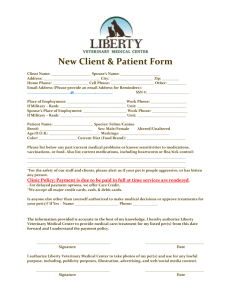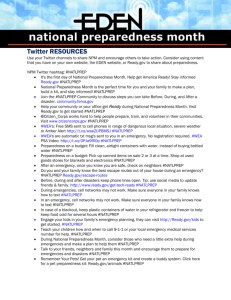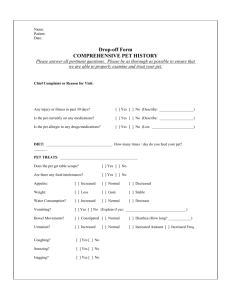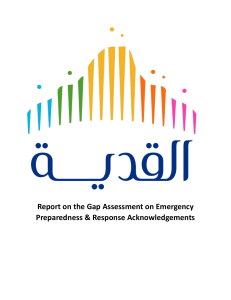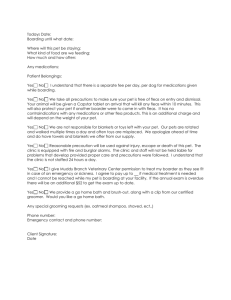EMERGENCY PREPAREDNESS FOR PATIENTS WITH SPECIAL HEALTH CARE NEEDS Checklist for Practices
advertisement
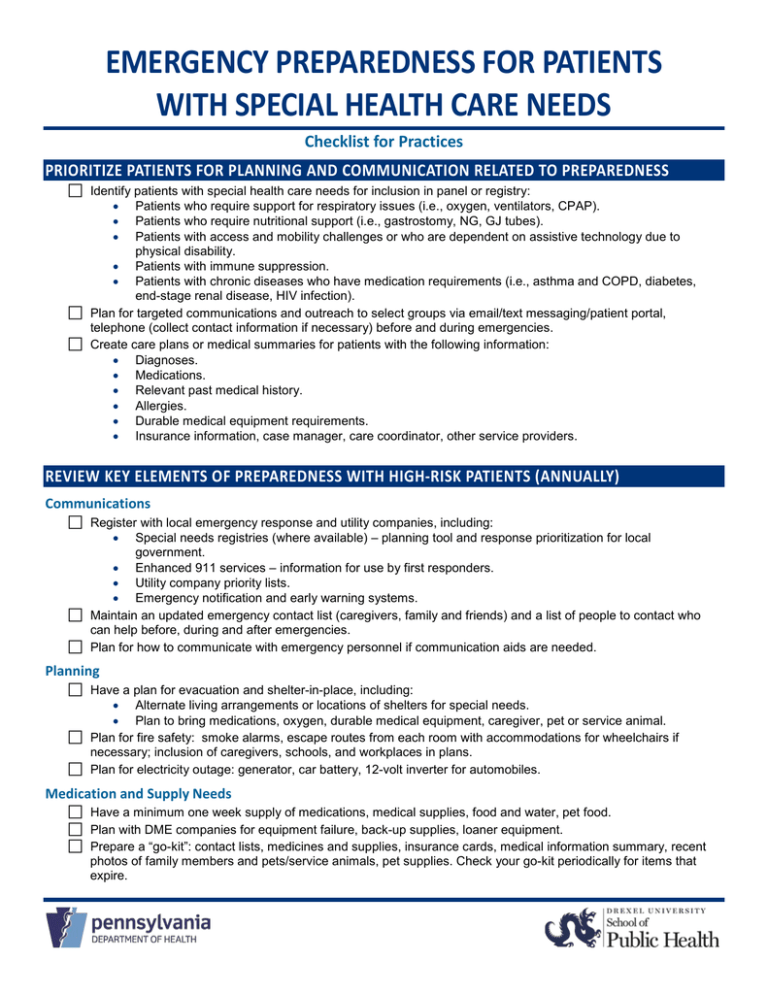
EMERGENCY PREPAREDNESS FOR PATIENTS WITH SPECIAL HEALTH CARE NEEDS Checklist for Practices PRIORITIZE PATIENTS FOR PLANNING AND COMMUNICATION RELATED TO PREPAREDNESS Identify patients with special health care needs for inclusion in panel or registry: • • • Patients who require support for respiratory issues (i.e., oxygen, ventilators, CPAP). Patients who require nutritional support (i.e., gastrostomy, NG, GJ tubes). Patients with access and mobility challenges or who are dependent on assistive technology due to physical disability. • Patients with immune suppression. • Patients with chronic diseases who have medication requirements (i.e., asthma and COPD, diabetes, end-stage renal disease, HIV infection). Plan for targeted communications and outreach to select groups via email/text messaging/patient portal, telephone (collect contact information if necessary) before and during emergencies. Create care plans or medical summaries for patients with the following information: • Diagnoses. • Medications. • Relevant past medical history. • Allergies. • Durable medical equipment requirements. • Insurance information, case manager, care coordinator, other service providers. REVIEW KEY ELEMENTS OF PREPAREDNESS WITH HIGH-RISK PATIENTS (ANNUALLY) Communications Register with local emergency response and utility companies, including: • Special needs registries (where available) – planning tool and response prioritization for local government. • Enhanced 911 services – information for use by first responders. • Utility company priority lists. • Emergency notification and early warning systems. Maintain an updated emergency contact list (caregivers, family and friends) and a list of people to contact who can help before, during and after emergencies. Plan for how to communicate with emergency personnel if communication aids are needed. Planning Have a plan for evacuation and shelter-in-place, including: • Alternate living arrangements or locations of shelters for special needs. • Plan to bring medications, oxygen, durable medical equipment, caregiver, pet or service animal. Plan for fire safety: smoke alarms, escape routes from each room with accommodations for wheelchairs if necessary; inclusion of caregivers, schools, and workplaces in plans. Plan for electricity outage: generator, car battery, 12-volt inverter for automobiles. Medication and Supply Needs Have a minimum one week supply of medications, medical supplies, food and water, pet food. Plan with DME companies for equipment failure, back-up supplies, loaner equipment. Prepare a “go-kit”: contact lists, medicines and supplies, insurance cards, medical information summary, recent photos of family members and pets/service animals, pet supplies. Check your go-kit periodically for items that expire.
